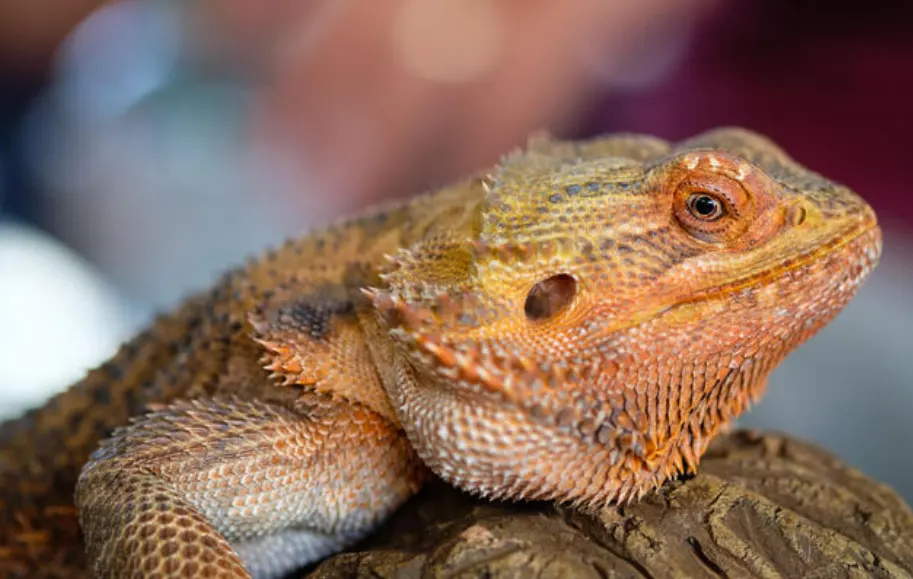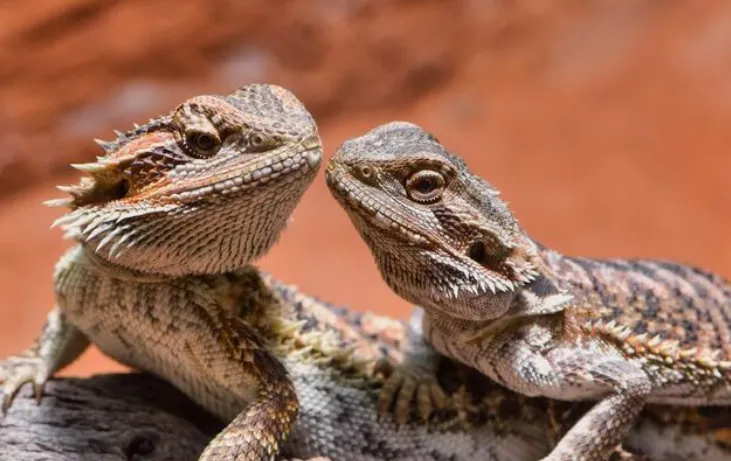
Table of Contents
Scientific Classification
- Kingdom: Animalia
- Phylum: Chordata
- Class: Reptilia
- Order: Squamata
- Suborder: Lacertilia (or Sauria)
- Family: Agamidae
- Genus: Pogona
- Species: P. vitticeps
Quick Overview
The Bearded Dragon (Pogona vitticeps) has cemented its place as a beloved reptile pet around the globe. With its distinctive “beard”, alert expressions, and calm demeanor, it’s not hard to see why. Indigenous to the Australian deserts, these hardy reptiles are well-suited to captivity.
Fast Facts
- Scientific Name: “Pogona vitticeps”
- Lifespan: 5-8 years in the wild; 8-12 years in captivity
- Average Size: 18-24 inches
- Diet: Omnivorous
- Habitat: Desert and arid woodlands
Did you know?
When threatened or trying to establish dominance, the Bearded Dragon can puff out its spiky “beard”, making it appear larger and more intimidating.
Appearance
Their scales form patterns that can change color in response to temperature or mood. Their broad, triangular head and spiked throat are distinctive, hence their name.
Size and Weight
On average, Bearded Dragons measure between 18-24 inches from head to tail tip. While males typically weigh between 350-600 grams, females can range from 250-500 grams.
Temperament and Behavior
Primarily diurnal, they’re known for their placid nature, making them ideal pets. They communicate through a series of gestures including arm waves, head bobs, and displaying their beard.
Fun Fact:
Bearded Dragons have a unique “arm wave” gesture, often misinterpreted as waving hello. It’s actually a submissive sign!
Habitat and Distribution
Originally from the desert regions and arid woodlands of Australia.
Care Guide
For potential Bearded Dragon owners:
- A spacious terrarium with UVB lighting.
- Daytime temperatures ranging from 75-85°F with a basking area reaching up to 100°F.
- Diet consisting of both insects and vegetables.
- Regular calcium and vitamin supplementation.
- A low humidity environment, replicating their desert habitat.

Diet and Nutrition
While juveniles are mainly insectivores, adults have an omnivorous diet. This means a mix of insects, vegetables, and occasionally fruits in captivity.
Fun Fact:
Bearded Dragons are known to enjoy a varied diet and can munch on everything from crickets to collard greens.
Health and Wellness
It’s essential to monitor for metabolic bone disease, respiratory infections, and impaction. An annual health check with a specialized reptile vet can ensure they’re thriving.
Breeding
The breeding season in captivity varies. After mating, females lay clutches of 15-30 eggs, which incubate for 55-75 days depending on temperature.
Conservation Status
While not endangered, wild populations face threats due to habitat alteration and the introduction of invasive species in Australia.
Fun Fact:
When Bearded Dragons sleep, they often “pancake” – flattening out their bodies against a warm surface to absorb heat.
Photo Gallery






Check out the video below to find out how Bearded Dragon arm wave looks like!
Related Profiles
- Leopard Gecko
- Blue-Tongued Skink
Share This Profile:
3 Amazing Facts About Bearded Dragon
- Sunbathing Pros: Bearded Dragons are ectothermic, meaning they regulate their body temperature using their environment. It’s common to see them basking under the sun to heat up or seeking shade to cool down.
- Versatile Diets: While they love their insects, adult Bearded Dragons enjoy a diverse menu that includes leafy greens, vegetables, and even some fruits.
- Tough Territoriality: When two male Bearded Dragons encounter each other, displays of dominance, including puffing up their beards and rapid head bobbing, often ensue. This dramatic dance helps to establish territory without physical conflict.
- Enchi Ball Python: A Unique and Stunning Morph of Python regius - March 27, 2025
- Emerald Tree Monitor: The Enigmatic Green Guardian of the Rainforest - March 26, 2025
- The Egyptian Cobra (Naja haje): A Fascinating Serpent - March 25, 2025
